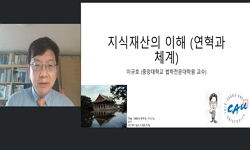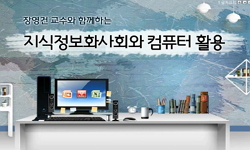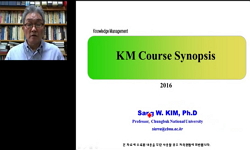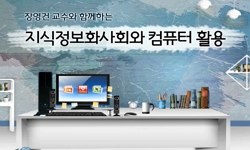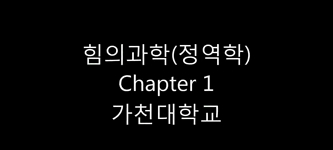본고는 문학을 인문 문화의 총체성 속에서 보고자 하는 거시적 입장에서 인간 생활의 중요한 본체이며 인간 욕망의 구체적 상징인 ‘힘’을 소재로 선정하고, 한국서사문학 속에서 ‘힘’ ...
http://chineseinput.net/에서 pinyin(병음)방식으로 중국어를 변환할 수 있습니다.
변환된 중국어를 복사하여 사용하시면 됩니다.
- 中文 을 입력하시려면 zhongwen을 입력하시고 space를누르시면됩니다.
- 北京 을 입력하시려면 beijing을 입력하시고 space를 누르시면 됩니다.
https://www.riss.kr/link?id=T11226184
- 저자
-
발행사항
대구 : 계명대학교 교육대학원, 2008
-
학위논문사항
학위논문(석사) -- 계명대학교 교육대학원 , 국어교육전공 , 2008. 2
-
발행연도
2008
-
작성언어
한국어
- 주제어
-
발행국(도시)
대구
-
기타서명
(A) study of the imagery of Power in the Korean Prose
-
형태사항
ⅱ, 86 p. : 삽도 ; 26 cm.
-
일반주기명
지도교수 : 강은해
참고문헌 : p. 80-82 - 소장기관
-
0
상세조회 -
0
다운로드
부가정보
국문 초록 (Abstract)
본고는 문학을 인문 문화의 총체성 속에서 보고자 하는 거시적 입장에서 인간 생활의 중요한 본체이며 인간 욕망의 구체적 상징인 ‘힘’을 소재로 선정하고, 한국서사문학 속에서 ‘힘’ 이미지의 원천․지속․변화 양상을 문학적 주제론의 시각에서 고찰해 보고자 한다.
본고는 한국 서사 문학 속에 내재된 힘의 이미지를 연구한다. 힘은 인간의 근원적 속성과 서로 유기적 관련을 맺으며 사회구조의 변화에 따라 모습을 달리한다. 여기서 인간의 속성이란 바로 욕망과 투쟁이다. 이러한 욕망과 투쟁이 사회구조의 변화와 맞물려 힘의 이미지를 형성하게 된다. 이것을 통시적으로 추적하는 것이 연구의 목적이다.
사회구조의 변화는 힘의 변화를 암시한다. 그 이유는 사회구조의 변화가 자아의 필요와 요구를 변화시키기 때문이다. 이러한 필요(need)와 요구(demand)를 충족시키기 위한 인간의 욕망(desire)은 다른 욕망과 투쟁한다. 투쟁의 결과로 어느 하나의 욕망이 두드러지게 나타나게 되는데 이 욕망이 바로 당대에 힘의 이미지를 형성하는 것이다.
중요한 것은 힘은 정해진 개념이 없는 다의어라는 사실이다. 힘의 다의성은 인간의 욕망이 다양하게 나타난다는 것을 의미한다. 왜냐하면 힘과 욕망은 사회구조 속에서 함께 나타나기 때문이다. 요컨대 힘은 사회구조의 변화에 따라 달리 생성되며 인간의 욕망의 성취와 투쟁 속에서 서로 유기적 관련을 맺으면서 다양한 힘의 이미지를 형성한다.
이러한 관점을 통해 본 연구는 한국 서사문학 속에 나타나는 힘의 이미지를 설화부터 개화기의 신소설에 이르는 범위 속에서 고찰한다. 설화에서는 「아기장수 설화」와 「오뉘 힘내기 설화」를 중심으로 작품 속에 나타나는 힘의 이미지를 추출한 결과 인간의 가장 근원적인 힘인 신체적 힘이 중심적인 이미지를 형성하고 있음을 살펴보았다. 조선 후기에는 상업의 발달과 실학사상의 발달로 인해 중세의 신체적 힘에서 돈의 힘으로 이행되어 경제적 힘이 중심적 이미지를 형성하게 된다. 돈의 힘은 중세 신분제도를 붕괴시키고 가부장제 속에서 억압 받던 여성을 중심부로 이끄는 중요한 기제로 작용하게 된다. 하지만 이렇게 대단한 위력을 과시하던 돈의 힘은 개화기 계몽운동의 영향으로 지식의 힘으로 이행된다. 개화기 지식의 힘은 계몽사상과 맞물려 입신출세의 수단으로 사용되었다. 또한 지식의 힘은 일제의 식민지 이데올로기 이식의 기제로 사용되면서 부정적인 힘으로 작용하기도 한다. 이처럼 힘의 이미지는 서사문학 속에서 고정된 이미지가 아닌 유기적인 이미지로 나타난다.
요컨대 설화에서 개화기까지의 한국서사문학에서 힘은, 다의성을 지니며 소설 속에서 반복되는 기호로서, 각 시대별로 작품의 구조와 사회의 구조에 적절히 조응하며 설화시대에는 신체적 힘이, 조선 후기에는 돈의 힘이, 개화기에는 지식의 힘으로 각각 재현되며 힘의 이미지를 형성한다.
다국어 초록 (Multilingual Abstract)
The ‘macro-poetic’ point of view sees literature in the context of the totality of human culture. from this point of view, the present thesis centers on a reality of essential importance and a concrete object of human desire, ‘power’. From the...
The ‘macro-poetic’ point of view sees literature in the context of the totality of human culture. from this point of view, the present thesis centers on a reality of essential importance and a concrete object of human desire, ‘power’. From the perspective of literary thematics, in Korean prose.
This study is to study the image of power inherent in the Korean prose. The fundamental properties and the power of human beings to each other organic structures related to the changes in the structure of social consciousness. The properties of the human desires and struggles. Desires and struggles is any change in the structure of society and power to the image formation. In addition, it is longitudinal as study purposes.
The change social structure is implies a change of power. The reason is that the change of social structure is needs and demands of self change. To sufficiency these needs and demand for human desires is struggles another desires. As a result of the struggle, which is a desire appears noticeably. This desire to form an image of power.
Importantly, the power is no fixed concept polysemy. It is the desire of the diversity of the various meanings of power. Because of Power and desire is appear together in the social structure. In summary, depending on the changing social structure, the power generated, and the desire of the human struggle and achievement of organic related to each other, forming an image that will bring the various power.
Through these viewpoints, Korean prose that appears in the an image of power from the novels of tale to the novel of the Enlightenment. Focusing on tale of the ‘Baby muscular man’, ‘Brother and sister of power competition’, the results that appear in the power to extract image, human of the most powerful sources of physical power, that the center of the image saw. This is a postscript Joseon, commercial and realism developmental. Because of this, medieval ‘physical power’ is changes ‘money power’, the economic power of the image centric. Money power is the collapse of the medieval identification system and a male-dominated society. Because of this, women are at the center of society emerges. But the power of money are the implementation knowledge of power. The power of knowledge, the used as a means of success. In addition, knowledge of the power of the Japanese colonial ideology of the mechanisms used as a transplant sometimes acts as a negative power. Such is the image of the power of a fixed image is not a literary epic organic images appear.
In summary, in prose literature from the novels of tale to the novels of the enlightenment, power has ambiguity sign that recurs regularly. With the cycle of each new generation power has amounts to a fitting response to both the structure of the works and the structure of society. It takes shape as physical power, money power, knowledge power.
목차 (Table of Contents)
- Ⅰ. 서론 = 1
- 1. 연구의 목적 = 1
- 2. 연구사 검토 = 4
- 3. 연구방법 및 범위 = 8
- Ⅱ. 힘과 인간 속성의 유기적 관계 = 14
- Ⅰ. 서론 = 1
- 1. 연구의 목적 = 1
- 2. 연구사 검토 = 4
- 3. 연구방법 및 범위 = 8
- Ⅱ. 힘과 인간 속성의 유기적 관계 = 14
- 1. 힘에 대한 욕망 = 14
- 2. 힘과 힘의 투쟁 = 18
- Ⅲ. 힘 이미지의 통시적 고찰 = 20
- 1. 설화 속 壯士의 힘 = 20
- 1) 비극적 힘의 남성 壯士 - 아기장수의 좌절된 힘 = 22
- 2) 힘내기 속의 남성과 여성 = 25
- ① 통과의례적 성격의 힘내기 = 25
- ② 여성 壯士의 힘 = 28
- 2. 조선 후기 돈(錢)의 힘 = 30
- 1) 신체적 힘에서 돈의 힘으로의 이행 = 33
- 2) 돈의 威力 = 36
- ① 기존 가치의 역전 = 36
- ② 나약한 지식의 힘 = 40
- ③ 돈으로 인한 여성의 상승 - 경제적 문제의 해결사인 여성 = 46
- 3. 개화기 지식의 힘 = 54
- 1) 돈의 힘에서 지식의 힘으로의 이행 = 56
- 2) 지식의 威力 = 60
- ① 입신출세의 수단 = 60
- ② 식민지 이데올로기 이식의 기제 = 62
- ③ 지식으로 인한 여성의 상승 = 65
- Ⅳ. 힘 이미지의 종합적 고찰 = 68
- 1. 有限的인 신체의 힘 = 69
- 2. 現實的인 돈의 힘 = 72
- 3. 理想的인 지식의 힘 = 73
- Ⅴ. 결론 = 76
- 참고문헌 = 80
- (Abstract) = 83
- (초록) = 85





